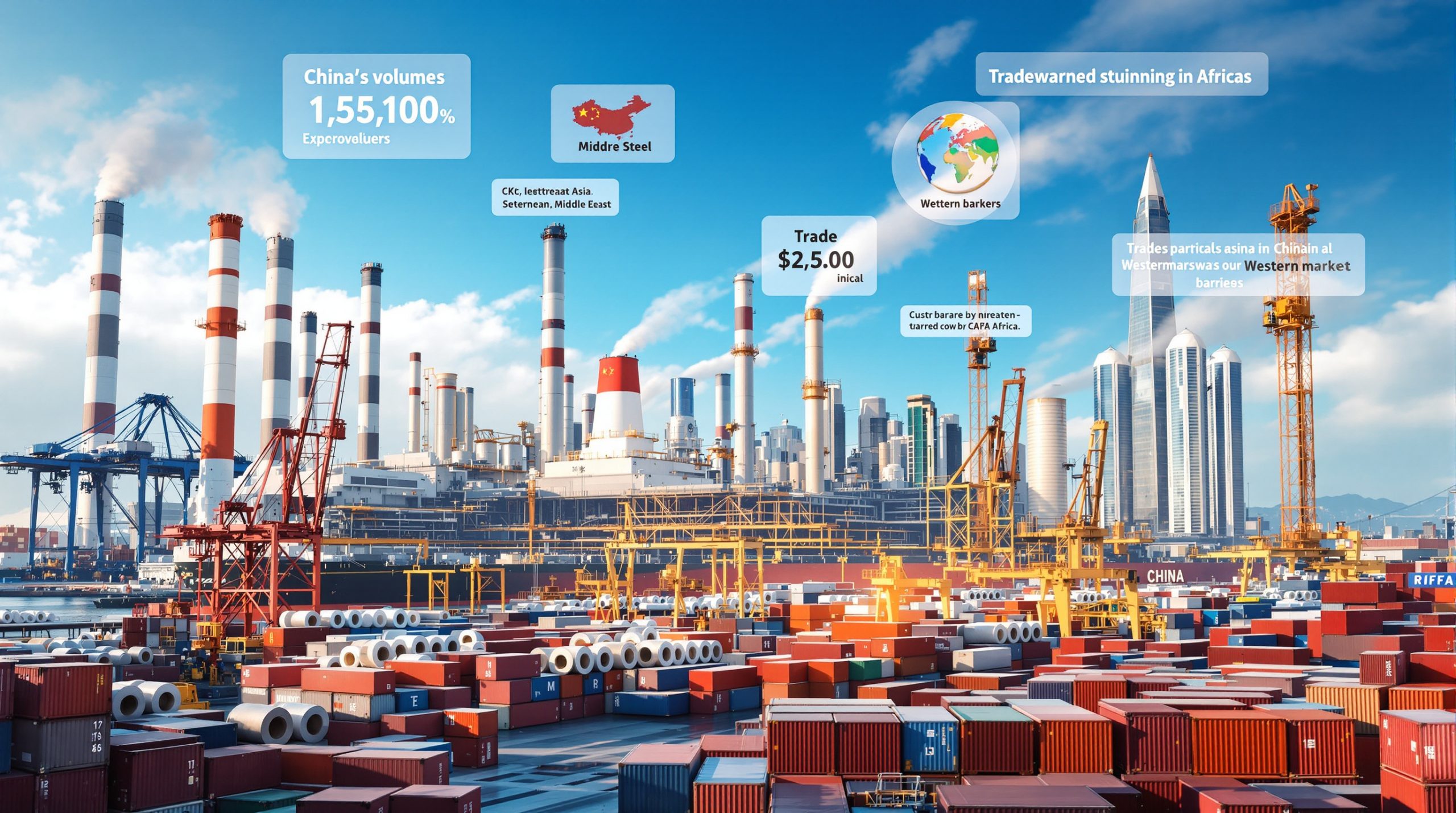Why is Copper Becoming a Critical Investment Opportunity?
The global economy stands at a pivotal inflection point where copper—often called the "metal of electrification"—has emerged as one of the most compelling investment themes of the decade. As governments worldwide accelerate decarbonization efforts and technological advancements reshape energy infrastructure, copper demand is projected to surge while supply faces unprecedented structural challenges.
This unique convergence of factors creates what industry experts describe as a once-in-a-generation copper investment opportunity in the copper sector, with potential returns that could significantly outpace broader market performance over the next decade.
Understanding the Copper Supply Crisis
How Severe is the Copper Grade Decline Problem?
The copper mining industry faces a fundamental challenge that continues to worsen: ore grades have declined approximately 40% since 1990 as easily accessible, high-grade deposits become increasingly exhausted. This decline directly impacts production economics, as processing lower-grade ores requires:
- More energy consumption per ton of copper produced
- Greater water usage for processing operations
- Expanded waste management infrastructure
- Higher overall environmental footprints
This grade deterioration particularly affects operating costs at major producing mines like Chile's Escondida and Peru's Cerro Verde, where operators must process substantially more material to maintain output levels.
Why Are New Copper Projects Taking Longer to Develop?
Mining development timelines have extended dramatically, with the average copper project now taking 16+ years from discovery to production—approximately four years longer than in 2005. This timeline extension stems from multiple factors:
- More complex environmental permitting requirements
- Extended community consultation processes
- Infrastructure development challenges in remote locations
- Stricter water usage regulations in arid mining regions
- Higher capital intensity requirements
These extended timelines create a critical disconnect between price signals and supply responses. When copper price predictions indicate growth, the industry cannot quickly bring new production online, exacerbating supply shortages and potentially leading to prolonged price elevation.
How Has Exploration Spending Affected the Project Pipeline?
Mining companies have significantly reduced exploration budgets to approximately 28% of historical levels (previously 50-60% of capital allocation), creating a severe constraint on the discovery pipeline. This spending reduction reflects:
- Investor pressure for immediate returns over long-term resource development
- Focus on brownfield expansion rather than greenfield discovery
- Risk aversion following previous exploration disappointments
- Capital discipline priorities among major miners
The exploration deficit particularly impacts the pipeline of development-ready projects, creating a strategic shortage that will take years to address even with renewed spending.
The Electrification Revolution Driving Copper Demand
How Are Electric Vehicles Transforming Copper Consumption?
The automotive industry's electric transformation represents copper's most visible demand driver. Modern electric vehicles require approximately 4x more copper than traditional internal combustion engines:
| Vehicle Type | Copper Content |
|---|---|
| Traditional ICE Vehicle | 20-25 kg (44-55 lbs) |
| Hybrid Electric Vehicle | 40-45 kg (88-99 lbs) |
| Battery Electric Vehicle | 80-85 kg (176-187 lbs) |
| Electric Bus | 370-380 kg (815-838 lbs) |
With global EV sales projected to reach 30 million units annually by 2030, this single sector will consume an additional 2.4 million tonnes of copper each year—equivalent to opening several world-class copper mines.
Major automakers have committed unprecedented resources to electrification:
- General Motors: $35 billion investment through 2025
- Ford: $50 billion commitment through 2026
- Volkswagen Group: $86 billion through 2025
These corporate commitments, backed by government mandates in California, Europe, and China, create an inexorable demand trajectory that traditional global copper supply forecast cannot easily satisfy.
What Role Does Renewable Energy Play in Copper Demand?
The renewable energy sector represents another substantial copper demand driver, with each technology requiring significant copper inputs:
| Renewable Technology | Copper Requirement |
|---|---|
| Wind Turbines | 4-15 tonnes per turbine |
| Solar PV Systems | 5-6 tonnes per MW |
| Energy Storage Systems | 0.8-1.2 tonnes per MW |
The International Energy Agency estimates that achieving net-zero emissions by 2050 will require global copper consumption to increase by approximately 70% from current levels. This estimate includes not only generation technologies but also the massive transmission and distribution infrastructure needed to support renewable integration.
How Are Data Centers and AI Affecting Copper Markets?
Artificial intelligence and cloud computing have created an unexpected copper demand surge that few market forecasts fully incorporate. Advanced data centers require:
- Sophisticated cooling systems with copper heat exchangers
- Redundant power infrastructure with copper wiring
- High-capacity electrical distribution systems
- Extensive grounding and protection systems
NVIDIA's latest AI chips and training systems demand 10-20 times more power than traditional computing, translating directly into copper consumption for supporting infrastructure. As AI deployment accelerates globally, this emerging demand segment could add hundreds of thousands of tonnes to annual copper consumption.
Geographic Risk and Jurisdiction Advantages
Why Are Tier-1 Jurisdictions Commanding Premium Valuations?
Political stability and regulatory predictability have become paramount investment criteria for copper projects. Operations in Chile, Canada, and Australia command significant valuation premiums over projects in higher-risk jurisdictions, even when geological characteristics are comparable.
This jurisdiction advantage manifests in multiple ways:
- Lower financing costs for project development
- Reduced risk premiums in valuation models
- Greater investor interest and capital availability
- More favorable insurance and risk management options
Projects in established mining regions benefit from existing infrastructure, skilled labor pools, and proven regulatory frameworks—critical advantages as capital intensity increases and ESG requirements become more stringent.
How Does Water Access Impact Project Economics?
Water availability has emerged as a critical differentiator for copper project economics, particularly in arid regions where many major deposits are located. Projects with secured water rights or access to seawater desalination infrastructure gain significant competitive advantages:
- Reduced permitting complexity and timeline uncertainty
- Lower operating costs compared to water-constrained competitors
- Enhanced community relations in water-stressed regions
- Improved ESG profiles for institutional investors
Companies with innovative water management solutions, such as dry-stack tailings technology or seawater utilization, can unlock value in deposits that might otherwise remain undeveloped due to water constraints.
Investment Strategies for the Copper Bull Market
What Types of Companies Offer the Best Risk-Adjusted Returns?
The copper sector offers various investment profiles with different risk-reward characteristics:
Development-Stage Companies
- Provide maximum leverage to copper price appreciation
- Offer defined development pathways with clear milestones
- Typically deliver 3-5x leverage to copper price movements
- Present catalyst-rich investment narratives through permitting, financing, and construction
Mid-Tier Producers
- Balance operational stability with growth potential
- Often trade at lower multiples than major miners
- Provide acquisition potential as consolidation accelerates
- Offer dividend potential while maintaining production growth
Major Diversified Miners
- Provide lower-risk exposure to copper fundamentals
- Often pay substantial dividends with copper price leverage
- Maintain strong balance sheets and operational diversification
- Offer liquidity advantages for institutional investors
Optimal portfolio construction typically includes exposure across these categories, weighted according to individual risk tolerance and investment timeframes.
How Should Investors Approach Geographic Diversification?
Investors should consider geographic diversification across copper investments to reduce political and regulatory risks. An optimized portfolio might include:
- Canadian projects (stable jurisdiction but higher operating costs)
- Chilean operations (established infrastructure but water constraints)
- Australian assets (mining-friendly regulations but distance to markets)
- Select opportunities in emerging jurisdictions with appropriate risk adjustments
This diversification approach helps mitigate jurisdiction-specific risks while maintaining exposure to the broader copper market fundamentals.
What Role Does ESG Performance Play in Valuation?
Environmental, social, and governance factors increasingly influence copper project valuations as institutional investors require sustainable operations. Companies demonstrating superior ESG practices command significant valuation premiums through:
- Lower costs of capital for project financing
- Enhanced access to institutional investment
- Reduced permitting timelines and regulatory friction
- Stronger community support and social license to operate
Projects incorporating renewable energy, water conservation, community development initiatives, and transparent governance typically achieve premium valuations compared to peers with weaker ESG credentials.
Industry Consolidation and M&A Outlook
Why Are Major Miners Aggressively Pursuing Copper Assets?
Large mining companies increasingly compete for quality copper assets as organic growth options diminish. Major players including BHP, Rio Tinto, and Freeport-McMoRan have announced significant copper expansion commitments while facing limited internal project pipelines.
This acquisition competition creates substantial premiums for development-ready copper projects. Recent transactions suggest valuations of $3-5 billion per million tonnes of annual copper production capacity—multiples that justify significant share price premiums for companies with defined development pathways.
The consolidation trend appears likely to accelerate as:
- Major miners face depleting reserves at existing operations
- Organic growth options become increasingly scarce
- Capital returns to shareholders limit internal development capacity
- Strategic positioning for the energy transition drives corporate strategy
How Do Strategic Partnerships Create Shareholder Value?
Joint ventures and strategic partnerships have become common development strategies for copper projects requiring substantial capital investment. These arrangements provide:
- Technical expertise from experienced operators
- Financial capacity for capital-intensive development
- Market access and offtake arrangements
- Risk sharing across multiple stakeholders
Companies that secure strategic partnerships often experience significant rerating as development risk decreases and project advancement accelerates. These partnerships can provide development optionality while preserving significant upside participation for original investors.
Technical Innovation and Processing Advantages
How Are Advanced Processing Technologies Creating Competitive Advantages?
Innovative processing technologies increasingly differentiate successful copper companies from struggling producers. Heap leaching for oxide copper deposits offers approximately 38% lower carbon intensity compared to traditional flotation processing, creating both environmental and cost advantages.
Companies implementing cutting-edge extraction technologies can:
- Unlock previously uneconomic deposits
- Reduce capital intensity for project development
- Meet increasingly stringent environmental standards
- Improve overall project economics and investment returns
Technical innovation in areas like bacterial leaching, electrowinning efficiency, and water recycling can transform marginal deposits into highly profitable operations, creating investment opportunities that market consensus may initially undervalue.
Market Catalysts and Timing Considerations
What Price Levels Signal Investment Opportunities?
Copper prices have demonstrated resilience above $4.00/pound, supported by Chinese infrastructure spending, U.S. grid modernization, and global decarbonization efforts. Technical analysis suggests continued strength as inventory levels remain below long-term averages while demand growth accelerates.
Strategic entry points typically emerge when:
- Copper prices consolidate after significant moves
- Producer equities lag physical copper price performance
- Sentiment indicators show excessive pessimism
- Technical support levels hold during market corrections
Equity markets typically anticipate copper price movements by 6-12 months, creating opportunities for investors who can identify supply-demand imbalances before they fully impact spot prices.
How Can Investors Manage Commodity Price Volatility?
Copper prices remain subject to economic cycles, Chinese demand patterns, and global trade dynamics. Investors should consider position sizing and diversification strategies to manage commodity price exposure while maintaining upside participation.
Effective risk management approaches include:
- Dollar-cost averaging into copper equity positions
- Utilizing options strategies to define risk parameters
- Maintaining exposure across the value chain
- Focusing on companies with superior cost structures
Companies with lower production costs and established infrastructure access typically outperform during price downturns while capturing full upside during bull markets. However, investors should also be aware of potential copper price collapse impact scenarios when planning their strategies.
Conclusion: The Copper Investment Thesis
The copper market presents a compelling opportunity for investors who understand the structural supply-demand dynamics reshaping this critical commodity market. The combination of accelerating demand from electrification, renewable energy, and digitalization alongside constrained supply from declining grades, extended development timelines, and exploration deficits creates a potentially multi-year bull market.
Companies positioned in Tier-1 jurisdictions with advanced projects and experienced management teams offer the most attractive risk-adjusted return potential as the world transitions toward electrification and sustainable energy systems.
Key investment considerations include:
- Focusing on companies with defined resources in stable jurisdictions
- Prioritizing projects with infrastructure advantages and water security
- Evaluating management teams with proven development experience
- Considering ESG leadership as a competitive advantage
- Maintaining awareness of potential acquisition targets as consolidation accelerates
With copper's critical role in the energy transition firmly established and supply constraints likely to persist for years, strategic exposure to this sector offers significant portfolio diversification benefits and potential outperformance.
Further Exploration
Readers interested in learning more about US copper project insight can also explore related educational content from Crux Investor, which offers additional perspectives on resource sector investments and market trends. Furthermore, BHP provides valuable insights on how copper will shape our future for investors seeking to understand the long-term fundamentals of this critical metal.
Want to Invest in the Next Major Mineral Discovery?
Stay ahead of the market with Discovery Alert's proprietary Discovery IQ model, which delivers real-time notifications when significant copper and other mineral discoveries are announced on the ASX. Explore why historic discoveries can generate substantial returns by visiting our dedicated discoveries page and begin your 30-day free trial today.




